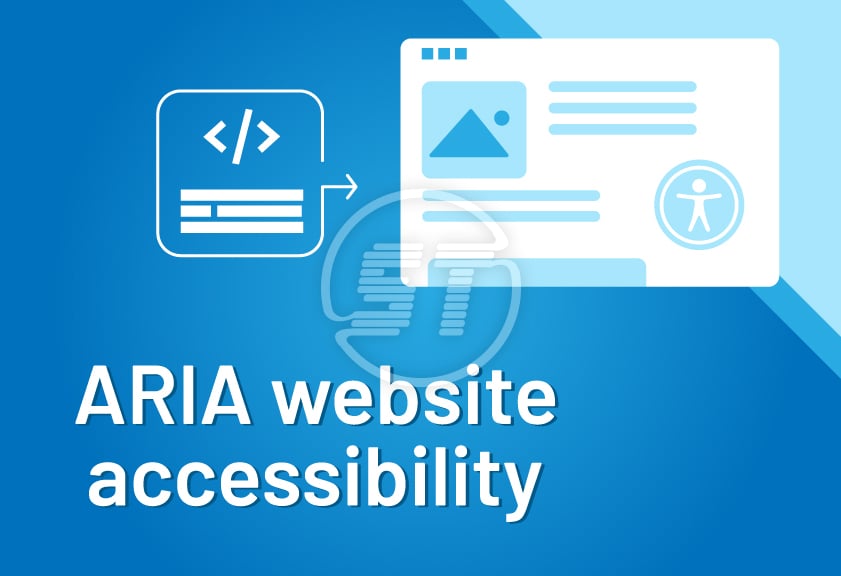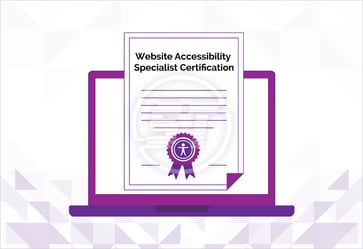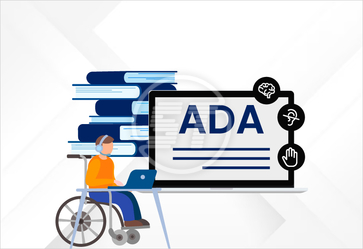The Internet is an indispensable part of daily life, providing access to information, services, and social interaction. However, for individuals with disabilities, navigating the web can be a significant challenge. In response to this requirement, the World Wide Web Consortium (W3C) developed the Web Accessibility Initiative – Accessible Rich Internet Applications (WAI-ARIA) to enhance website usability for those relying on assistive technologies.
ARIA accessibility plays a vital role in ensuring that web content is usable by all individuals, regardless of their physical, sensory, or cognitive limitations.
What is ARIA?
ARIA is a set of attributes designed to make web content and applications more accessible to people with disabilities. ARIA provides additional semantic information about elements on a webpage, allowing screen readers and other assistive technologies to interpret content more effectively.
By using ARIA roles, states, and properties, developers can bridge the gap between standard HTML elements and complex dynamic content that may otherwise be inaccessible.
A brief on roles, states, and properties:
Role: It defines the type of an element for example: a button, a heading, a link, or a list. The role provides information about these elements to assistive technologies such as what they are and how they should be treated.
State: A state specifies the current situation of an element, which is subject to change with time. For example: an element is checked, selected, disabled, expanded, or with invalid status. It tells assistive technologies about the behavior of elements during user interaction.
Property: A property defines an attribute of an element such as its name, value, label, description, or required status. It tells an assistive technology about what an element contains or does.
Advantages of ARIA accessibility
Enhanced navigation for screen reader users
Screen readers are essential for visually impaired users to interact with web content. However, standard HTML can sometimes be insufficient in conveying the full context of dynamic web elements. ARIA helps by defining roles such as ‘button’, ‘navigation’, or ‘alert’, which inform assistive technologies about the function of various elements.
This ensures that screen readers can properly announce interactive components, enabling users to navigate a website more efficiently.
Improved interaction with dynamic content
Modern websites often include dynamic content like pop-ups, sliders, and drop-down menus. These features can be difficult for users with disabilities to manage. ARIA attributes like ‘ARIA-live’, ‘ARIA-expanded’, and ‘ARIA-controls’ allow developers to communicate changes in content or states directly to assistive devices, ensuring that users are promptly informed of updates, even in complex interfaces.
Better understanding of form elements
Forms are a common point of frustration for users with disabilities, especially when labels are unclear or when visual cues are the primary guide. ARIA attributes such as ‘aria-label’, ‘aria-labelledby’, and ‘aria-describedby’ provide detailed information about form elements, allowing screen readers to convey context accurately.
This enhanced labelling reduces confusion and helps users complete forms with greater ease.
Increased compatibility with diverse assistive technologies
Not all assistive technologies interpret standard HTML the same way. ARIA creates a more consistent experience across various devices and software, ensuring broader accessibility. Whether a user relies on a screen reader, voice recognition software, or a Braille display, ARIA attributes provide the necessary information for these technologies to interpret web content accurately.
Support for custom widgets and components
Many websites feature custom widgets and components that go beyond standard HTML, such as carousels, accordions, and models. Without ARIA, these components might be inaccessible to users with disabilities. ARIA roles and properties allow developers to define these custom elements in a way that assistive technologies can understand, making them usable for a wider audience.
Best practices for implementing ARIA!
While ARIA is powerful, it is important to use it correctly. Here are a few best practices for implementing ARIA:
- Use native HTML first
Whenever possible, rely on standard HTML elements before turning to ARIA. Native HTML elements are inherently more accessible and require less intervention. - Avoid overuse
Using too many ARIA attributes can cause confusion rather than clarity. ARIA should be used to fill gaps that standard HTML cannot address. - Test with assistive technologies
Regularly test the website with screen readers, keyboard navigation, and other assistive tools to ensure that ARIA is functioning as intended. - Keep roles and labels consistent
Ensure that roles, labels, and properties are applied consistently across the website to maintain clarity for all users.
Future of ARIA in web development!
An inclusive digital approach is crucial in order to shape the future of web accessibility. And ARIA guidelines’ enhancement with time is an important way for this progression.
Therefore, WAI-ARIA 1.2 specifications get regular updates to ensure that they meet the evolving requirements of users with disabilities. The updates improve web content semantics thereby every dynamic and complex web application become more accessible.
The W3C team diligently enhances the level of ARIA specifications by incorporating feedback from various developers and real users. Thus, ARIA guidelines help create responsive and user-centric websites.
Moreover, ARIA and new web technologies ought to be in tandem to offer a seamless user experience to everyone. When technologies are evolving, it is crucial that ARIA specifications are updated accordingly. Innovations such as improved screen readers, voice navigation, and advanced tactile interfaces are increasingly acquiring the web world to ensure inclusivity and developers need such ARIA roles, states, and properties that are compatible with latest innovations.
If the roles, states, and properties are updated and providing correct information to assistive technologies, ARIA is helpful to create inclusive websites.
In a nutshell,
ARIA accessibility is a critical component in creating inclusive digital experiences. By enhancing the usability of websites for individuals with disabilities, ARIA levels the playing field, ensuring that everyone, regardless of their physical or cognitive abilities, can interact with the benefit of web content. Implementing ARIA thoughtfully not only improves accessibility but also demonstrates a commitment to inclusivity, making the Internet a more equitable space for all.
Are you looking to incorporate web accessibility? Our flexible digital accessibility solution is an exceptional fit for any size, any budget, and any type of businesses, State and federal government departments who are considering streamlining web accessibility and adopt digital inclusion. Our approach for enterprise website accessibility involves thorough audit, strategic planning, website accessibility remediation, consulting, document remediation, VPAT, self-assistance training, ongoing monitoring, and support that cater to diverse user needs. Request a quote or reach out [email protected].


